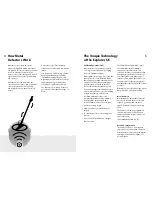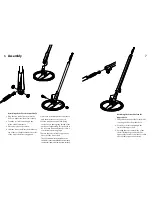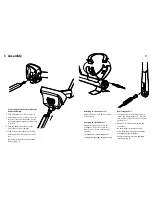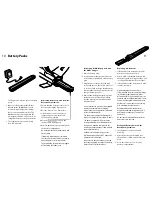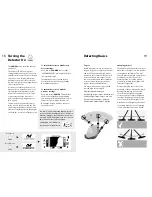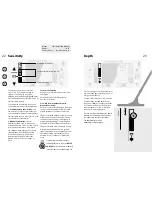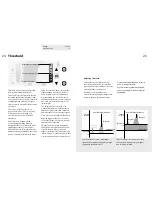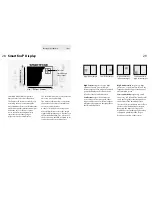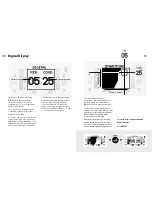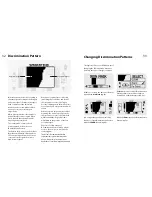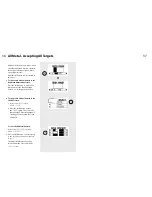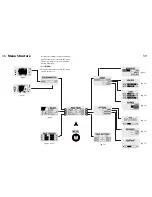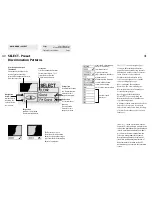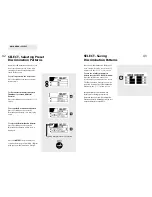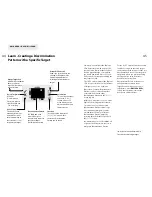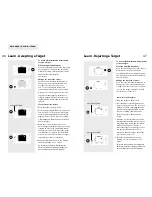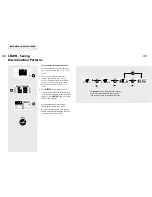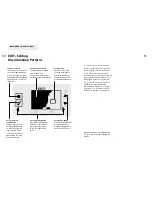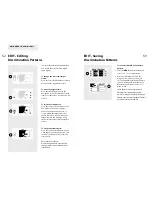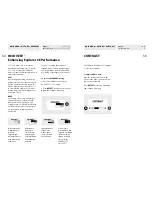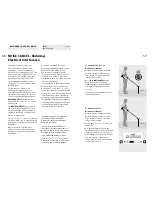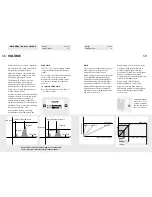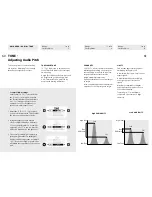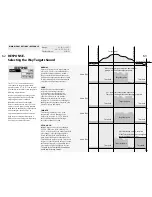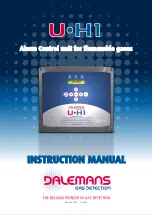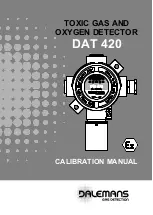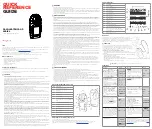
32
33
Discrimination Pattern
Discrimination is the detector’s ability to
eliminate signals from undesired targets
and accept signals from desired targets.
Each coordinate of the Smartfind
window can be turned white or black
to accept or reject certain targets,
respectively.
White (clear) pixels indicate that those
particular targets are accepted. Black
pixels indicate that those particular
target signals are rejected.
The combination of rejected and
accepted pixels is referred to as a
‘Discrimination Pattern’.
The Pattern shown above is the default
Discrimination Pattern of the Explorer
SE. It accepts signals from non-ferrous
coins and rejects signals from most
high-ferrous targets.
When an accepted target is detected
(matching the conductive and ferrous
characteristics of coins), the Target
Crosshair will appear in the white
(clear)
area of pixels and a target response will
sound.
When a rejected target is detected (not
matching the conductive and ferrous
characteristics of coins), the Threshold
will blank and the Target Crosshair
will remain in the position of the last
accepted target.
Explorer SE offers a range of
Discrimination Patterns which may be
used on their own or in combination.
(Select, pg. 40)
The default Discrimination Pattern
represents the typical characteristics
of non-ferrous coins, a composite of
hundreds of coins from around the world.
Rejected Targets
Accepted Targets
The Explorer SE has four different ways of
changing the Discrimination Pattern to
find only the types of targets you want:
Changing Discrimination Patterns
Reduce or increase the amount of ferrous
signals with
Iron Mask
(pg. 34).
Select
from a preset list of Discrimination
Patterns that correspond to common
desired and undesired targets
(pg. 40).
Use a target that you have previously
found to create a Discrimination Pattern
with the
LEARN
feature
(pg. 44).
Manually
Edit
areas of the Discrimination
Pattern
(pg. 50).
Summary of Contents for Explorer SE
Page 1: ......

